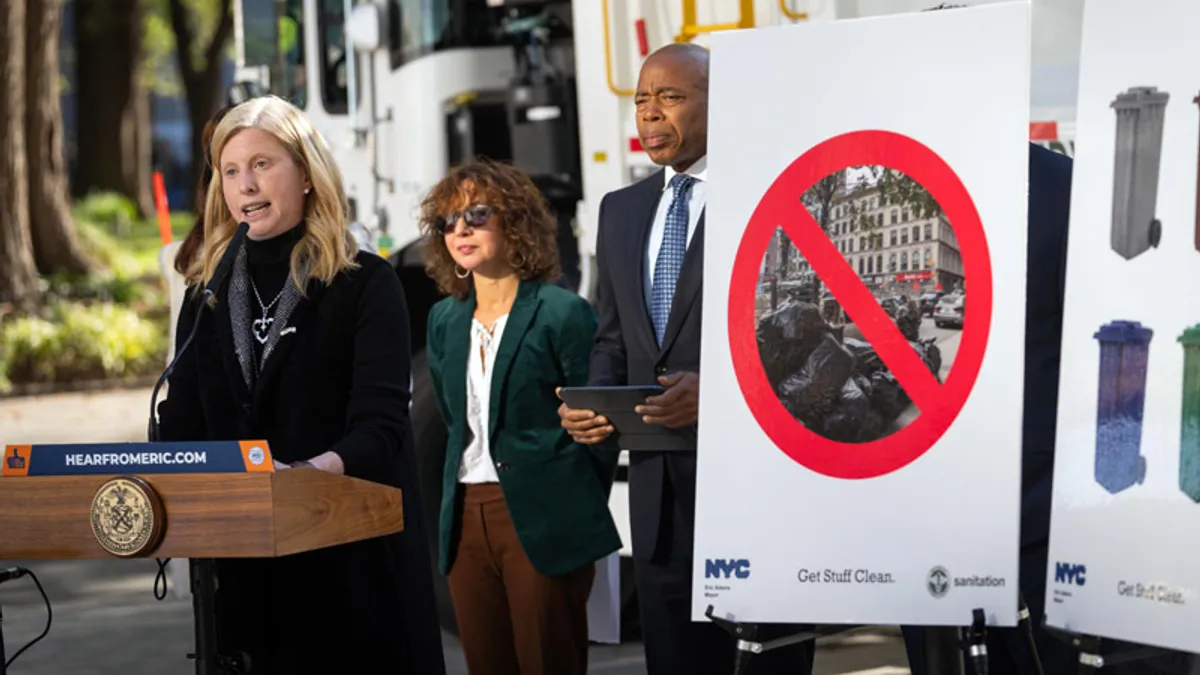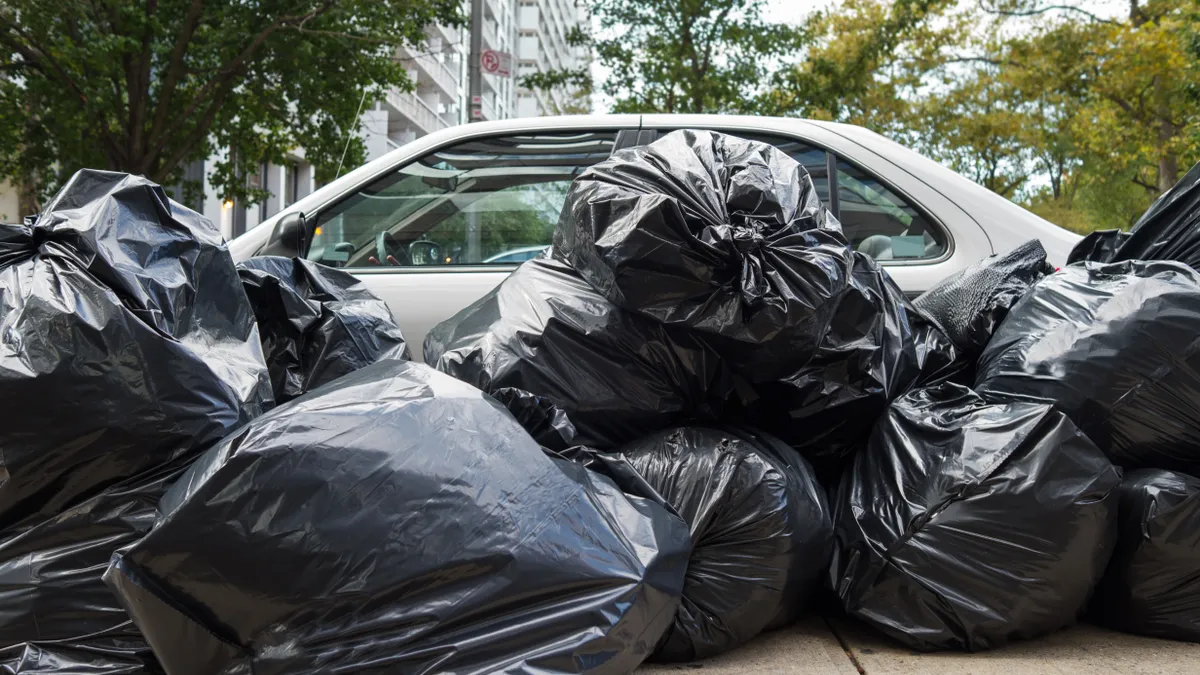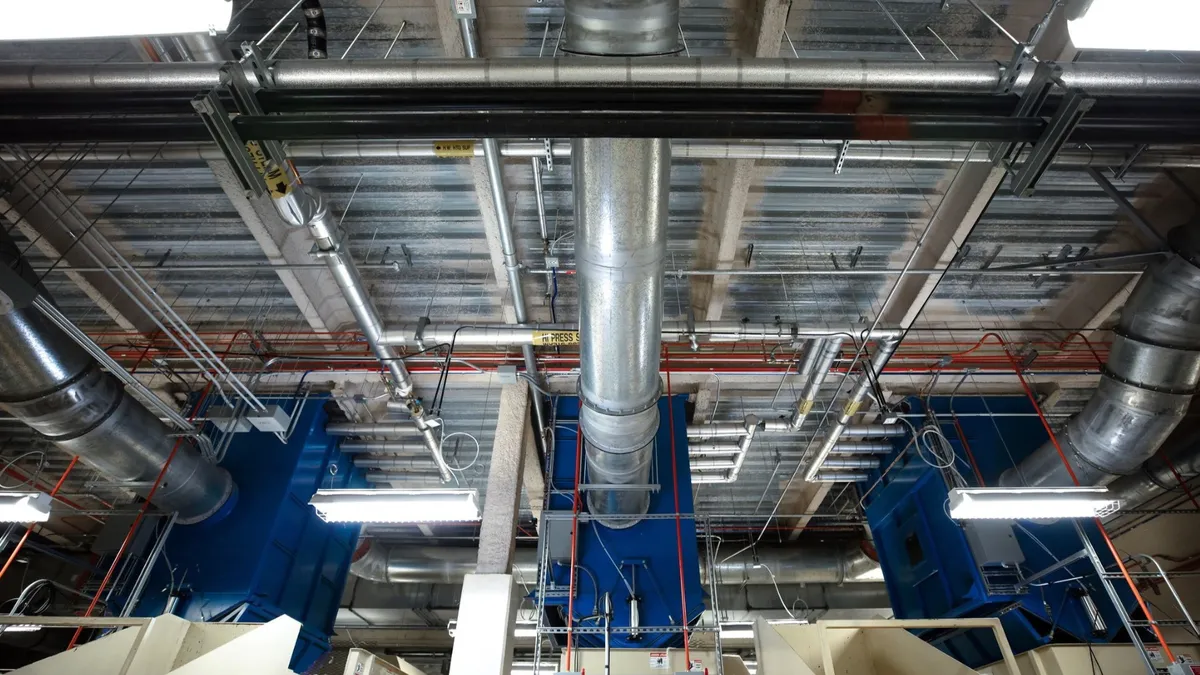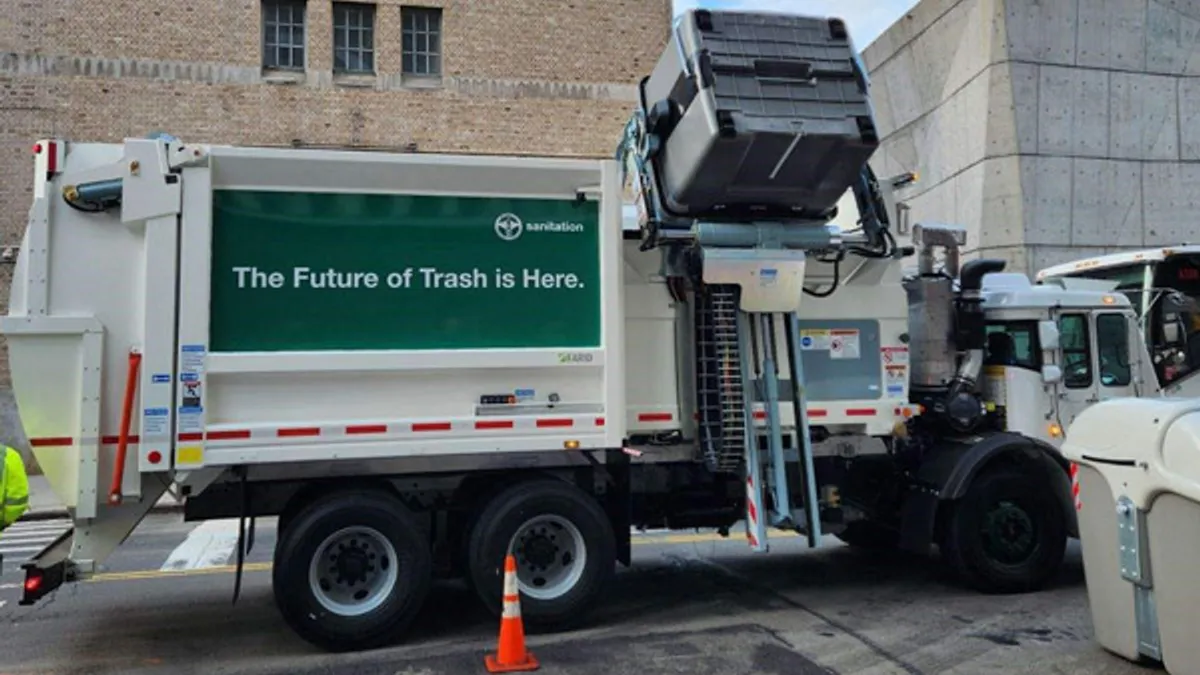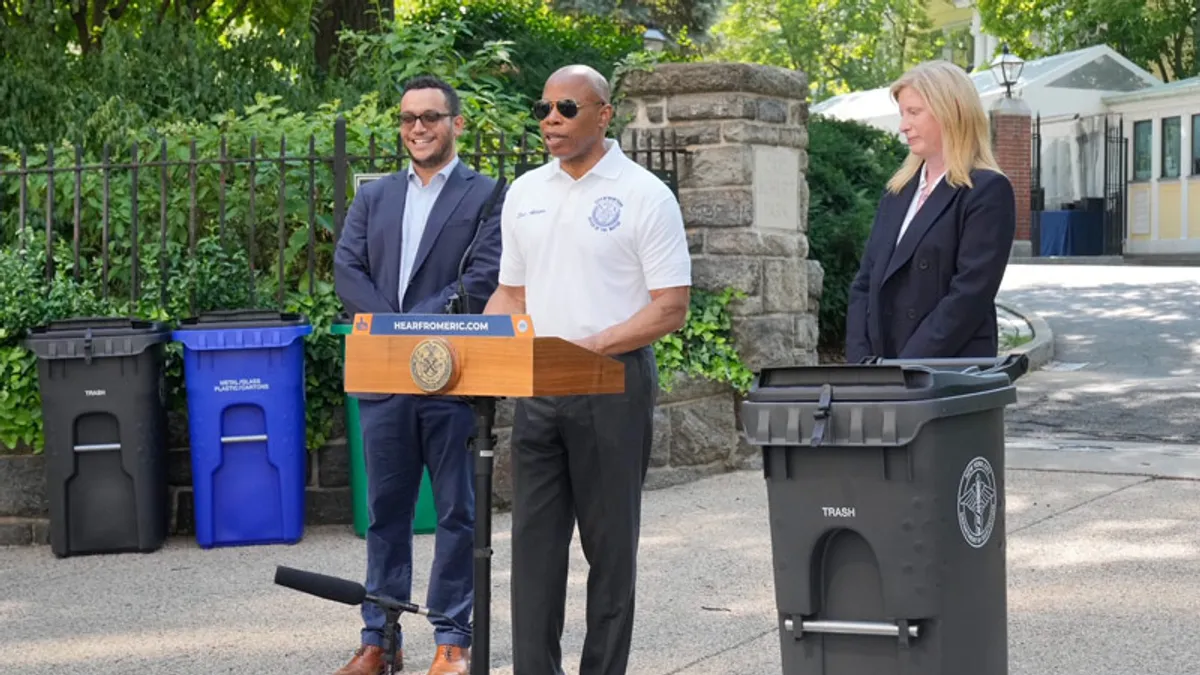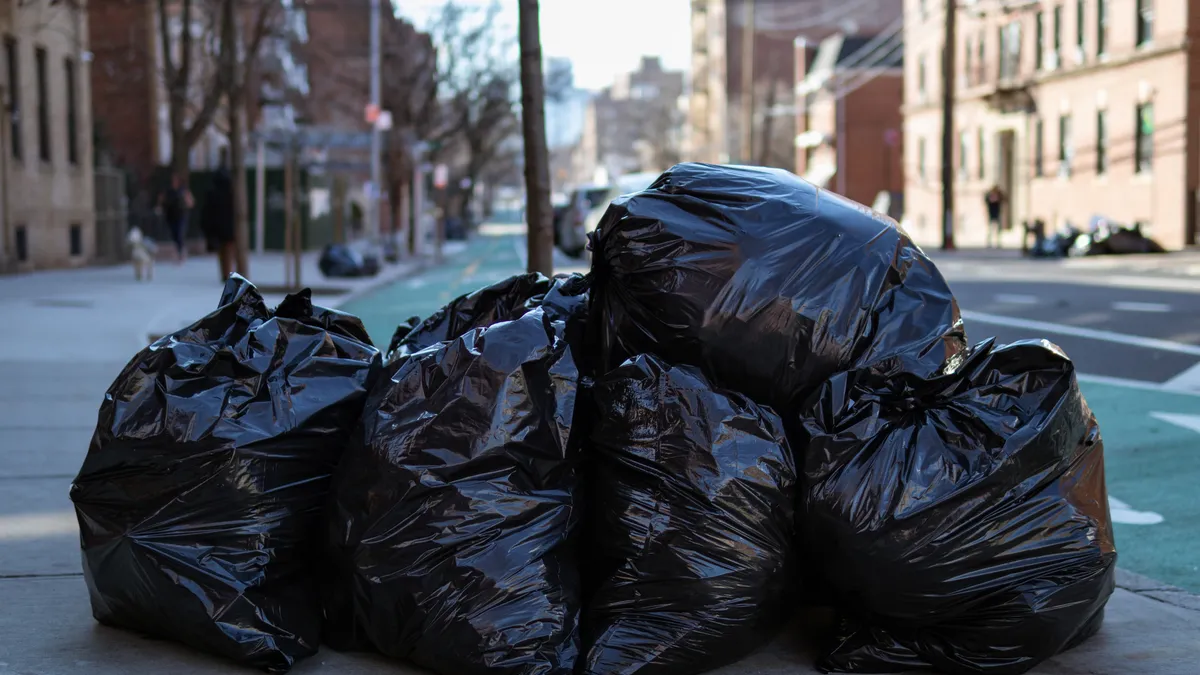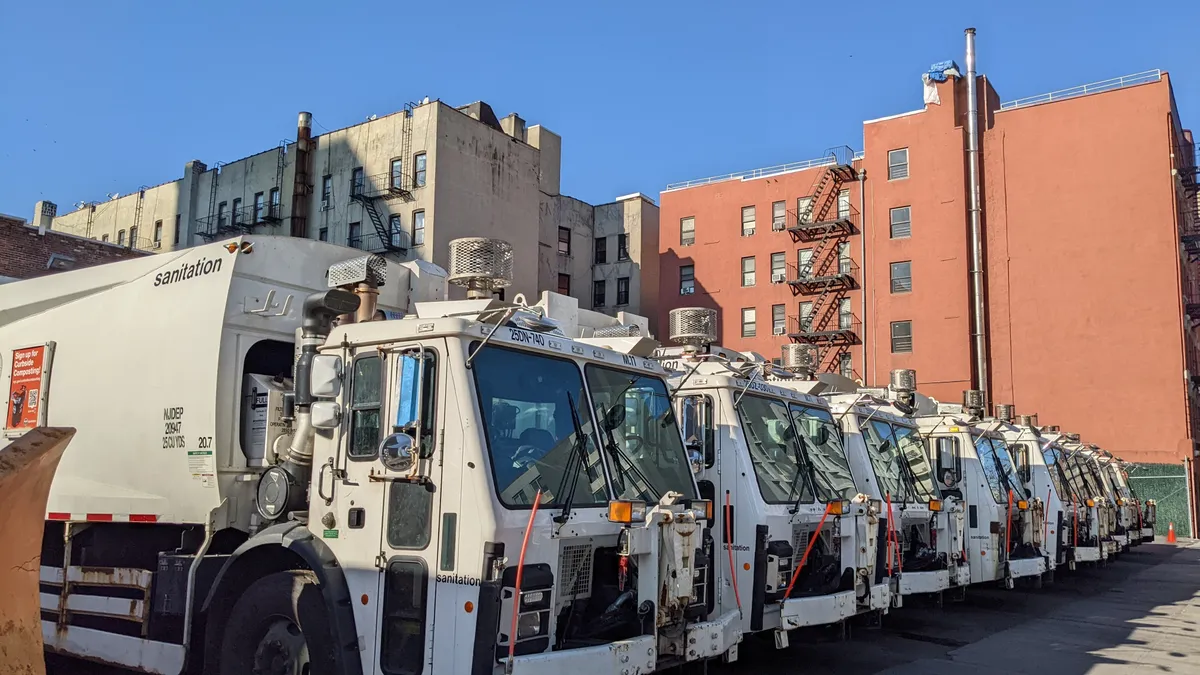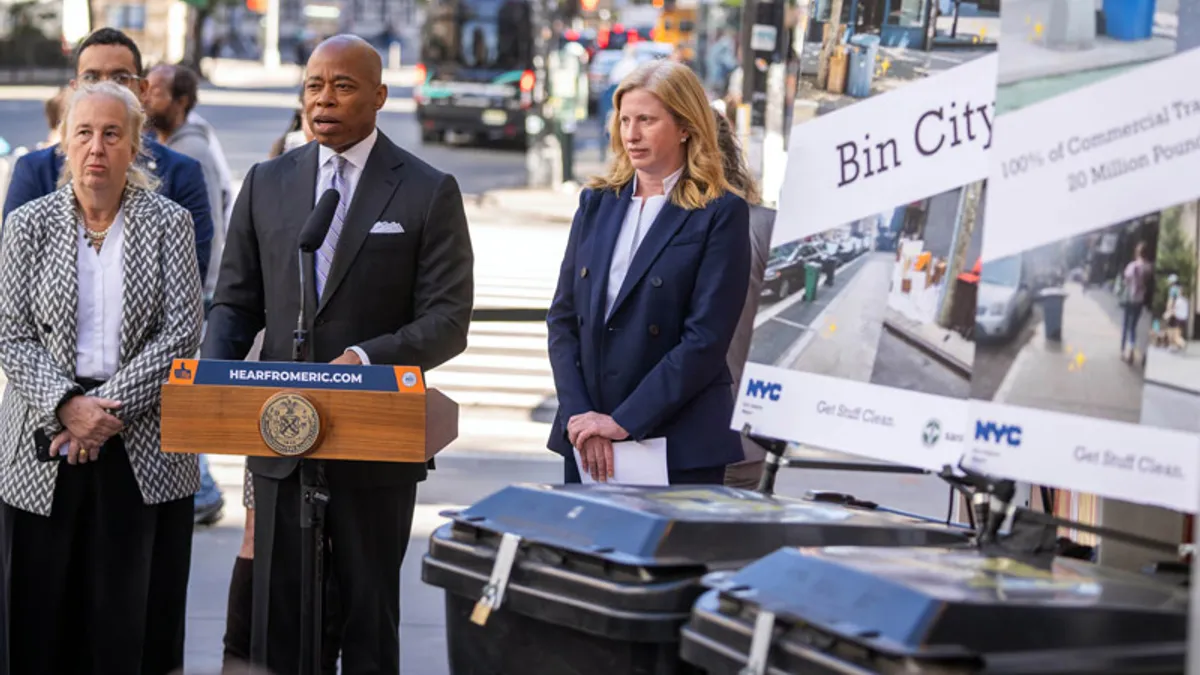New York’s Department of Sanitation announced residential containerization requirements this week and issued a request for a vendor to supply millions of standardized bins.
This move, billed as an anti-rodent effort, follows prior changes in set-out times that incentivized containerization, a spate of recent commercial containerization requirements and an ongoing residential pilot for larger wheeled containers in one neighborhood. Currently, residential buildings set their waste out in piles of bags, or in store-bought plastic and metal trash cans.
Commissioner Jessica Tisch, speaking at a Wednesday press conference, touted “sweeping progress in ending the primacy of the black trash bags” as “one of the most notable changes to city streets in a generation.”
The details
The agency released an RFP on Wednesday for a 10-year contract, with possible extensions, to manufacture and sell official “NYC Waste Bins” at a “substantial discount over existing retail prices.” A pre-proposal conference is scheduled for Oct. 31 and bids are due by Nov. 27.
Major U.S. bin manufacturers could not be reached for comment prior to publication, but multiple companies would meet the RFP’s qualifications.
DSNY’s move coincides with plans to require containerization at all buildings with nine or fewer units by an unspecified “fall of 2024” date, followed by a requirement to use the new NYC Waste Bins by the “summer of 2026.”
DSNY estimates this requirement will cover 765,000 residential buildings, or 95% of residential properties. Buildings with between 10 and 20 units may also use the containers. Overall, the agency is calling for a vendor to produce an estimated 3.18 million bins.
A plan for the remaining 5% of buildings, which includes many large multifamily properties and accounts for a sizable share of the city’s waste volumes, has not been finalized.
The RFP calls for two-wheeled plastic bins in multiple sizes, including the option for a larger 60 to 65 gallon size that could be activated in the future. Containerization will only be required for refuse, but the bins will also be available for the city’s organics and dual-stream recycling program.
Initial production targets by percentage
| Size by Gallons | Max. Price | Refuse (Black) | Mixed Paper (Green) | Metal/Glass/Plastic (Blue) | Organics (Brown) |
|---|---|---|---|---|---|
| A (20-25) | $45 | 100% | |||
| B (30-35) | $50 | 20% | 20% | 20% | |
| C (45-50) | $70 | 80% | 80% | 80% | |
| D (60-65) | $80 |
Any bin over 40 gallons must have a handle. Refuse and organics bins must have hinged lids and a latching mechanism. The agency is also targeting lightweight options, among other specifications.
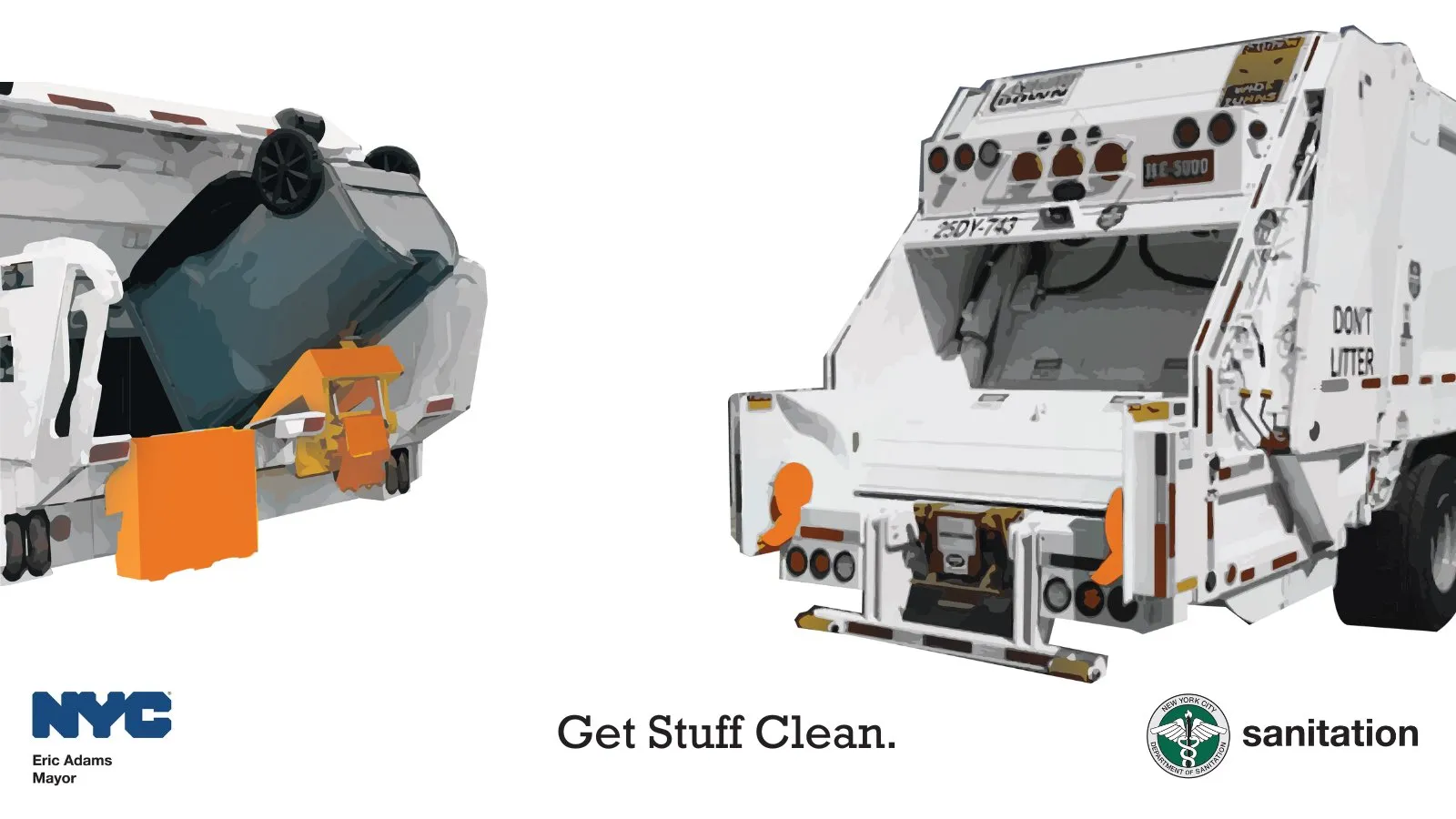
Additionally, the RFP said all bins “must be manufactured to be compatible with mechanical cycling by a ‘bar-lock’ lifter” to align with a planned retrofit of its rear-load collection fleet.
The vendor will be responsible for all customer service, sales and distribution of the bins, including a preference that the company or a third-party partner establish a physical retail location in each of the five boroughs during the initial rollout. The first bin delivery is targeted for six months after the contract start date.
It’s more common to see haulers or local governments directly manage bin purchase or distribution in the U.S., but the RFP said New York is taking this particular approach because it doesn’t charge residents a direct fee for waste collection. A tight budget environment is also a factor, according to sources.
While it has also become more common to see the use of recycled content in carts, the RFP does not specify a preference for this feature, and the agency is unlikely to factor that into its decision.
Press Secretary Vincent Gragnani said via email the primary goal is to have a design that is “affordable for residents, highly durable given the realities of NYC streetscape, and light enough to be maneuvered by both residents and sanitation workers.”
Mayor Eric Adams said during the press conference that “the cost of these containers are going to be below market value to make sure that this is not going to be an additional burden on taxpayers” and called it “a small price to pay” for clean streets. He also noted that residents currently pay for large garbage bags, which may become less necessary over time.
The reactions
The announcement has sparked some discussion about costs and the lack of public input ahead of finalizing the bin plans, but various state and local elected officials have had positive reactions.
“I welcome a universal, standardized, durable, affordable rodent-proof bin for landfill bound trash that can complement the brown bins for organics,” said Sandy Nurse, chair of the New York City Council’s sanitation committee, via text message. “When new rules are rolled out without public input, I am always concerned about equity. As Sanitation chair, I will be following this closely to ensure low-income communities of color are not faced with disproportionate negative impacts of the new rule.”
The plan drew mixed reviews from some local containerization experts. Ben Miller, a former DSNY policy planner, and Clare Miflin, founder of the Center for Zero Waste Design, said via a joint email that they support the general concept but not its scope.
“We agree that it is good to have standard 2-wheeled bins for low-density 1-2 family houses, but once you get to 3-4 family row houses, we think it will involve too many bins per block and that one set of shared [stationary] containers on each side of the block would likely be enough and look much better,” they wrote, noting this will also add to the growing number of commercial containers on sidewalks.
The agency is still pursuing plans for stationary containers that will be serviced by custom automated side loaders and intends to release more details in the near future.
That said, in areas where individual bins are considered appropriate, the two think the containerization requirement should also be applied to the recycling and organics streams.
DSNY’s curbside organics program, which is undergoing a citywide rollout, currently offers small bins upon request but generally encourages residents to use their own bins. Miller said “this is setting up a terribly inefficient collection program to continue to be as inefficient as possible,” noting it would be preferable to include larger organics bins that are compatible with the planned automated collection system.
Additionally, Miflin and Miller note that the truck retrofits for automated collection should also allow for collection of four-wheeled bins, which they believe is the best solution at most larger buildings depending on available space building height and staffing options. DSNY declined to address this topic when asked.
When asked about ergonomic concerns involved with managing various bin sizes for organic waste, which tends to be heavier, Nurse said, “sanitation workers should absolutely be consulted in the process of selecting a winning bid for the RFP.”
A spring DSNY containerization report previously described individual bins as best suited for single-family homes or rowhouses with up to six units, a category that accounts for an estimated 21% of daily waste volumes. The report said this option could cover half of residential streets, with shared containers for another 39% and 11% considered too difficult to containerize. Because DSNY is now pursuing individual bins for a larger share of buildings, it wasn’t readily clear how those earlier figures correlate with Wednesday’s estimate that 5% of buildings will still need other solutions.
Gragnani said “the majority of the remaining 5% of residential buildings can be served by stationary on-street containers” and encouraged new and existing large buildings with loading docks to utilize internal options when possible.
Editor’s note: This article has been updated to clarify comments from Miflin and Miller about options for large buildings.



